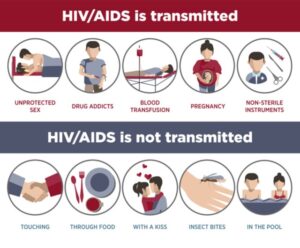Evidence review suggests digitally-supported HIV self-testing increases testing and engages first-time testers, paving the way for greater use.
A global evidence review suggests digitally-supported HIV self-testing increases uptake, engages first-time and hard-to-reach testers, and successfully links people to HIV treatment.
The systematic review assessed 46 studies published between 2010 and 2021. Around three-quarters (72%) were observational studies and 28% were randomised control trials.
Around half of the studies featured web-assisted HIV self-testing, using websites, online video counselling and chatbots. One quarter assessed the use of social media or dating apps to promote HIV self-testing or provide kits. The rest of the studies assessed self-testing supported by text message (SMS), self-testing apps, and using digital vending machines to provide self-testing kits.
Most of the studies happened in Asia, North America and Europe and focused on men who have sex with men. Only three studies happened in Africa and two in South America.
Between 54% and 99% of people involved in the studies were willing to self-test for HIV using some form of digital support. HIV self-testing supported by social media or dating apps had the highest approval rating of all the digital innovations.
The number of people taking an HIV test increased when they had access to web-based or social media supported self-testing. This is in comparison to traditional testing and self-testing conducted without digital support.
The discreet nature of mobile apps and web-based self-testing meant they were very effective in reaching first-time testers and people from communities that have been marginalised.
One of the main issues with HIV self-testing is whether people with a positive screen will then test at a facility to confirm their result. The evidence review found a ‘promising trend’ here. Some studies found more people went on to get a confirmatory test and HIV treatment after taking a digitally-supported self-test, compared to those taking offline HIV tests. A high level of people with a negative HIV screen from a self-test also went on to use HIV prevention services, such as PrEP.
Looking at the different digital approaches in more detail, 87–95% of people were willing to get an HIV self-test through social media or a dating app. Social media and dating apps also increased testing uptake and linked 80–100% of people with a positive screen to confirmatory testing and treatment.
Web-supported HIV self-testing was acceptable to 77–97% of people and increased uptake. Three web-based studies offered a choice between online self-testing, a hybrid option (online pre-test counselling with clinic-based testing) or counselling and testing in a clinic. Most participants preferred the online option. In two Thai studies, the highest proportion of first-time testers was in the online group.
In general, web-supported HIV self-testing was effective in linking people to a confirmatory test and treatment (53–100%). But one of the Thai studies found people in the online testing group were less likely to link to treatment than people taking HIV tests in clinics.
SMS innovations increased HIV testing among hard-to-reach groups. Between 54–94% of people who self-tested for HIV using SMS support returned their kits, which indicates use.
Digital vending machines were acceptable to 54–93% of people. Uptake was six times greater compared to HIV tests distributed by community workers. But the location of vending machines mattered due to stigma and discrimination concerns. People in one study expressed a preference for vending machines in health facilities rather than in public places.
The most effective type of digital solution varied in different contexts and for different groups. While most people preferred online self-testing, for example, others wanted a healthcare professional to support them in person, either before or after taking a test.
The evidence will be used to inform policy recommendations. Its findings may be particularly useful as the COVID-19 pandemic continues to increase the need for remote healthcare solutions.
But there is a lack of evidence on how different groups of people at higher risk of HIV respond to digitally-supported HIV self-testing. There is also a lack of data from low- and middle-income countries with high HIV prevalence. This evidence is needed to ensure digital innovations reach those who need them most.




